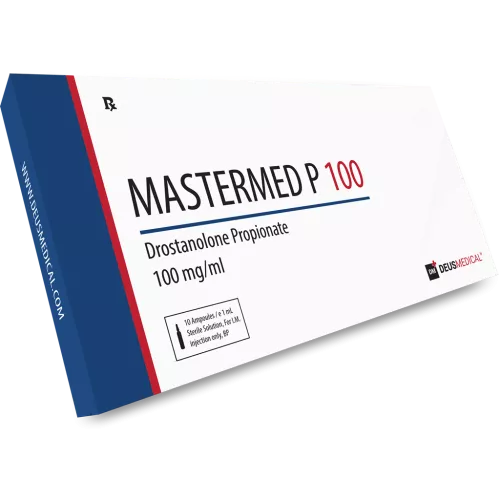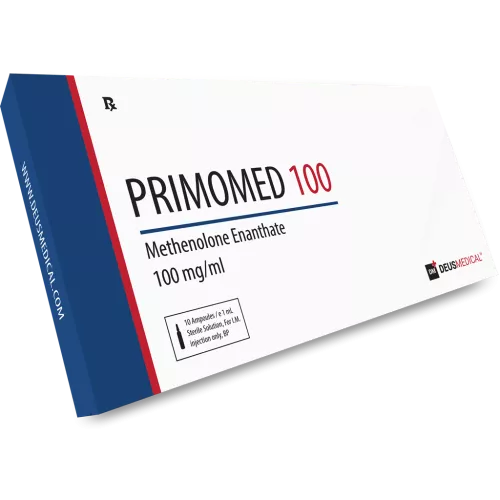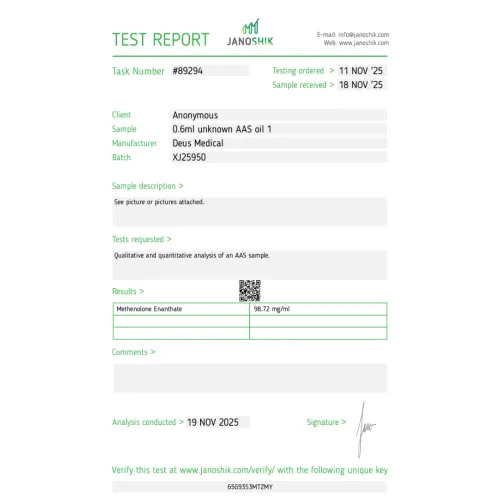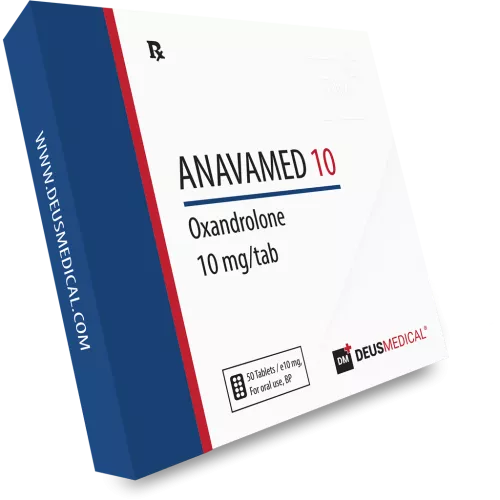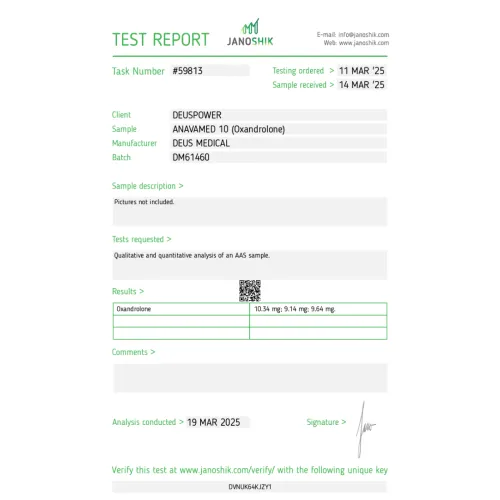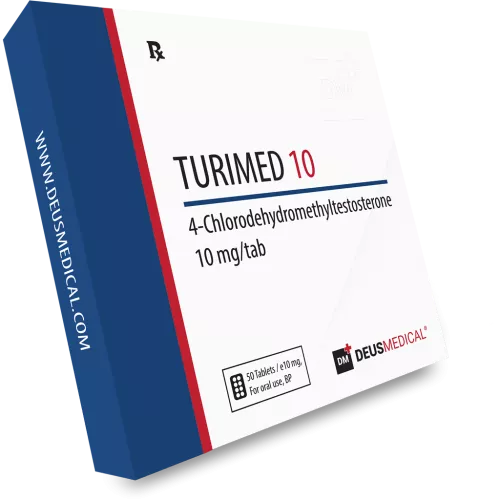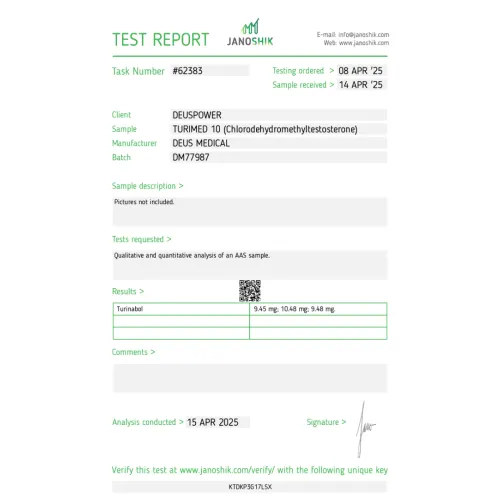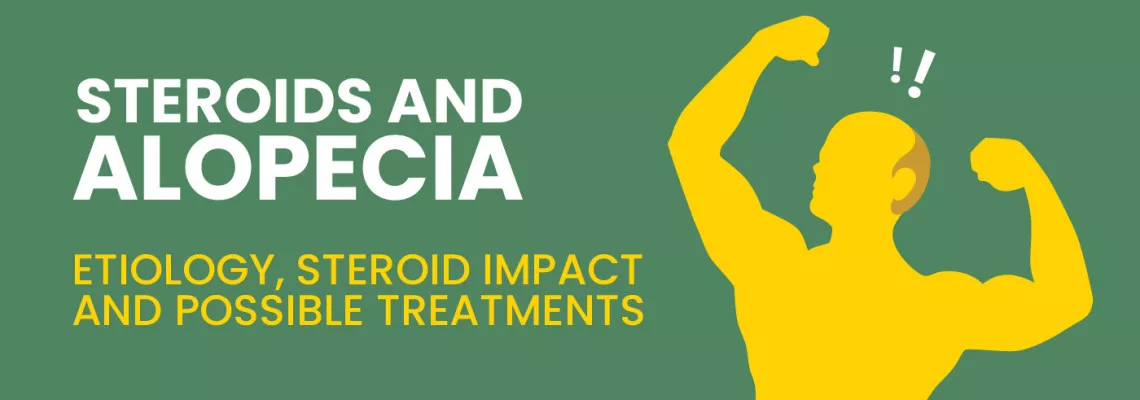
1. INTRODUCTION
Androgenetic alopecia is one of the major indicators of steroid use, often causing distress in young men who do not want to go bald, to put it simply.
How much of androgenetic alopecia is genetic and how much is influenced by the quality of practice in pharmacology and supplementation?
The truth is, a lot. Men with the right genetic pattern can use steroids for the rest of their lives and hardly lose any hair. Those fortunate individuals are not our focus because they are blessed, and I curse them all for their luck. We know many examples of these lucky bastards like Tom Platz, Dorian Yates, Steve Reeves, Arnold Schwarzenegger, and many others who didn't start losing their lush hair until they were over 40.
However, the type of man we are concerned with is the user between 22 and 40 years old, who has a propensity to lose hair and, by making improper use of anabolic steroids (AAS), will end up bald sooner than expected.
2. ETIOLOGY
When we talk about the cause of Androgenetic Alopecia, it is simple: there is a clear genetic pattern. However, as I mentioned, it is the combination of genetics and other factors that cause alopecia to develop earlier than it would naturally due to aging.
The main cause of androgenetic alopecia is genetic sensitivity to androgen hormones, especially dihydrotestosterone (DHT). DHT is a byproduct of testosterone and affects hair follicles, making the hair thinner and shorter with each growth cycle until it eventually stops growing altogether.
The hair follicle is an organ in itself, and a single follicle can house between 2 and 4 hairs.
It is crucial for the hair follicle to have certain characteristics to stay healthy and not undergo degradation leading to cellular death of the follicle:
-Oxygenation: The follicle must receive enough oxygen through blood vessels. This is important because, in cases of hypertension and oxidative stress, the follicle suffers and is more likely to lose functionality.
-Cleanliness: The skin naturally produces sebum, a waxy substance that can clog the follicle, preventing proper hair growth.
Here are some good practices for maintaining healthy hair and not accelerating hair loss foolishly:
-Avoid stress: Chronic stress can contribute to hair loss, so it is important to find ways to manage stress, such as meditation, regular exercise, relaxation time, and emotional support. However, to be honest, it is uncommon for androgenetic alopecia to be aggravated by stress.
-Keep the scalp clean: Regularly washing hair with a mild shampoo can help keep the scalp clean and healthy. Avoid excessive use of harsh chemicals and over-washing, as this can dry out the scalp and damage hair follicles.
-Scalp massage: A gentle scalp massage can increase blood circulation and stimulate hair follicles, which may promote hair growth. You can do this with your fingertips for a few minutes each day.
-Avoid excessive heat: Frequent use of heat tools like hair dryers, straighteners, and curling irons can damage hair and follicles. Try to limit the use of these tools and always use a heat protectant before applying heat.
-Regular hair trims: Trimming the hair regularly can help prevent split ends and maintain overall hair health.
-Avoid tobacco and alcohol: Both tobacco and alcohol can negatively impact scalp health and hair growth. Both are toxic to the body; tobacco is probably the worst as it contains polycyclic aromatic hydrocarbons and triggers the creation of free radicals.
-Hydration: Keep hair and scalp hydrated by drinking enough water and using moisturizing conditioners and nourishing hair treatments.
But mainly what causes the follicle to lose functionality and eventually close is the interaction with DHT and excess androgens. The follicle is much more sensitive to DHT than to other androgens because it has specific receptors for DHT.
Hair and follicles have their own life cycle. These life periods are cyclical, and when androgenetic alopecia is not experienced, they will reach the exogen phase, where the old hair finally sheds to make way for new hair. Let's take a closer look at the phases of hair growth:
-Anagen Phase (Growth Phase): This is the active growth phase of the hair, which can last between 2 and 7 years on the scalp. During this phase, the cells of the hair follicle divide rapidly, and the hair grows approximately half a centimeter per month. About 85-90% of hair follicles are in this phase at any given time.
-Catagen Phase (Transition Phase): This is a short transition phase that lasts approximately 2-3 weeks. During this stage, the hair follicle contracts and separates from the dermis, stopping hair growth. Only about 1-3% of hair follicles are in this phase at any given time.
-Telogen Phase (Resting Phase): This is the resting phase of the hair cycle, lasting around 3-4 months. During this stage, the hair rests in the follicle while new hair begins to grow beneath it. About 10-15% of hair follicles are in this phase at any given time.
-Exogen Phase (Shedding Phase): This is the final step of the hair cycle, where the old, resting hair is shed from the hair follicle to make way for new, growing hair. This process is part of the natural hair renewal cycle and generally does not result in hair loss.
After the exogen phase, the hair follicle will return to the anagen phase and start a new hair growth cycle. It is important to note that each hair follicle is at a different stage of its life cycle at any given time, meaning hair does not grow uniformly across all areas of the scalp.
This is why, when hair transplants are performed, the donor areas are usually the nape and areas distant from typical alopecia zones. These areas take much longer to degrade and fall out because their life cycle is different.
But the breaking point is the cellular death of the follicle, which then closes, leaving nothing more to be done there.
Let's delve a bit deeper: which steroids should be avoided, or what practices should be avoided during their use, if we want to minimize hair damage and keep it as long as possible?
3. STEROIDS AND AGA
I imagine the first drug that comes to mind is Trenbolone or a similar compound, but nothing could be further from the truth. The drug we should most limit if we want to avoid AGA would be high doses of Testosterone, as it is the only hormone that can convert to DHT.
There is no exact dose, but using more than 250-500 mg of Testosterone when having AGA would be quite foolish, considering it is the first drug to avoid.
After this, we should avoid steroids with a very high androgenic load such as Trenbolone, Halotestin, Oxymetholone, and Dianabol.
It's quite simple in this aspect: we stick to the two injectables that are really safer, and a couple more with a good androgenic profile and fewer adverse effects compared to the rest, such as:
Primobolan: A mild androgen, making it one of the best options for maintaining healthy hair if you suffer from androgenetic alopecia.

Masteron: Despite what was thought years ago, although it is a compound very similar to DHT, it is not DHT and is not as androgenic.
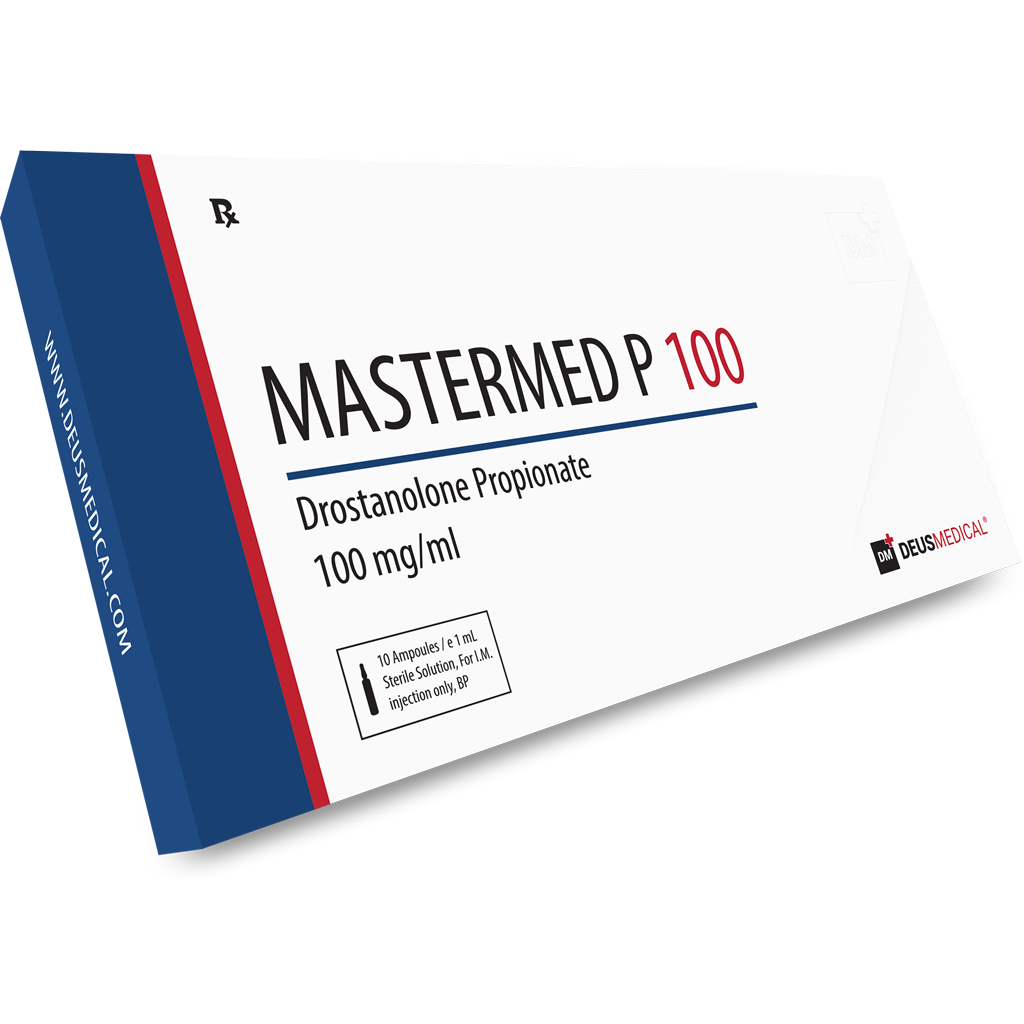
Oxandrolone: Mild androgen.
Nandrolone: Medium-low androgenicity. It is important not to use it if you are using a 5-alpha reductase inhibitor because Nandrolone reduces to DHN, and inhibiting the 5-alpha would significantly increase the androgenic potency of Nandrolone.
Turinabol: Medium-low androgenicity.
Among all these compounds, I prefer the first two to form the majority of the therapy, keep Testosterone at the minimum possible, and seek anabolism through other means.
4. WHAT TREATMENTS ARE AVAILABLE TO REDUCE HAIR LOSS?
The first step, if you truly want to begin a process of regaining hair density and stopping its loss, would be to include a 5-alpha reductase inhibitor, the main enzyme that converts Testosterone into DHT. What options do we have and what are their differences?
Finasteride: Finasteride is an oral type 1 5-alpha reductase inhibitor with systemic effects, i.e., throughout the entire body.
Remember that many other tissues and organs benefit from DHT, so sexual and psychological side effects are common. However, within a bodybuilder's pharmacological therapy, it's not as terrible since we have more androgens from exogenous sources. But there's an even better option.
Dutasteride: Although it shares the mechanism of action with Finasteride, it also works systemically in its oral form. However, it inhibits 5-alpha reductase in both its isoforms, making it more potent. If starting a treatment for AGA, my recommendation would be Dutasteride but not in oral form, rather in mesotherapy, with direct injections into the scalp. Additionally, its half-life is longer, and the effect will be local and not systemic.
In mesotherapy, the treatment is localized in the follicles, avoiding systemic psychological and sexual side effects.
This is a common treatment in aesthetic clinics and trichologists, where 2-3 sessions per month are usually sufficient for an AGA treatment. Despite what is said, it's not very painful, but always consult your trichologist to individualize your treatment based on the phase you're in.
So if we choose a 5-alpha reductase inhibitor, we will choose Dutasteride. But is there more? The next drug we will choose is Minoxidil, as a significant part of the pathology of AGA is the loss of follicle oxygenation.
Minoxidil: It is a drug originally used to treat high blood pressure but was discovered to have the ability to stimulate hair growth.
Its mechanism of action lies in improving blood flow and stimulating inactive or more affected hair follicles by AGA, leading to the growth of new hairs within a follicle and significantly reducing its miniaturization, greatly improving density.
Minoxidil is available in a 2% and 5% topical solution and a 5% topical foam. It is applied directly to the scalp twice a day, and continuous use is recommended to maintain results.
Minoxidil does not completely stop the process of hair loss in androgenetic alopecia, but it can slow its progression and improve the appearance of existing hair.
It's important to note that Minoxidil can have side effects, such as scalp irritation, dryness, itching, or flaking.
The winning combination is Dutasteride in mesotherapy + topical Minoxidil, low doses of Testosterone, and Masteron/Primobolan/Oxandrolone as the main anabolic.
If a transplant is also desired, it can be done after 6 months to 2 years on this type of treatment where a significant amount of hair is usually recovered. Finally, hair is inserted from donor areas such as the nape and areas that practically do not have DHT receptors.
5. RU58841/PROSKELIA
A less-known product from 1993 belongs to the group of non-steroidal SARMs, but unlike a SARM aimed at gaining muscle mass, it is a selective androgen receptor modulator, but works as antiandrogen
It has a potency 30 times greater than Flutamide, an antiandrogen used for prostate cancer cases.
The interesting thing about this product is that it acts locally as an antiandrogen in the hair follicle. It is applied in the form of a lotion and, as mentioned, acts locally only in the applied area, drastically reducing side effects.
According to human studies, no side effects were found, and it has similar efficacy to first-line drugs such as other antiandrogens or 5-alpha reductase inhibitors like Dutasteride and Finasteride but with fewer adverse effects. It's similar to Dutasteride in mesotherapy but without the downside of subcutaneous injections.
One way to make this drug more efficient is to combine it with topical Minoxidil.
6. KETOCONAZOLE SHAMPOO
Ketoconazole is an antifungal medication that works by inhibiting the synthesis of ergosterol, an essential component of fungal cell membranes.
This weakens the fungal cell membrane, leading to its death and elimination. Although it was created for this purpose, ketoconazole shampoo has various properties that can help delay hair loss:
-Reduction of Inflammation: Chronic inflammation of the scalp, such as that caused by seborrheic dermatitis, can contribute to hair loss. By treating and reducing this inflammation, ketoconazole can improve the health of the scalp and hair follicles.
-Antifungal Properties: Some cases of hair loss are related to fungal infections of the scalp. By eliminating these fungi, ketoconazole can help prevent hair loss related to these infections.
-Antiandrogenic Effect: Studies suggest that ketoconazole may have a mild antiandrogenic effect, meaning it can reduce the effects of DHT (dihydrotestosterone), a hormone that plays a key role in androgenetic alopecia.
By reducing the action of DHT on the scalp, ketoconazole could help reduce hair loss.
7. HAIR TRANSPLANTS
Hair grafts, also known as hair transplants, are surgical procedures aimed at treating baldness and hair loss.
Follicular Unit Transplantation (FUT) or Follicular Unit Extraction (FUE):
This is the most common procedure, essentially involving micro hair grafts. In the procedure, a strip of scalp is removed from the back of the head, dissected into individual follicular units, and transplanted into areas where follicles have completely closed.
Some advantages of this intervention are that a large number of grafts can be transplanted in a single session. Depending on the type of baldness, the need for grafts to achieve a satisfactory appearance can range from 2,000 to 5,000 follicles.
Often, grafts are needed from other donor areas, not just from the back of the head (the nape), where hair follicles are less receptive to DHT and even resist at an advanced age. The chosen areas often include beard or even chest hair, simply to fill in dark areas and cover a large surface area.
To undergo micrograft treatment, a trichological study is required first. The usual treatment is a 5-alpha-reductase inhibitor + minoxidil, and visits to the specialist every 3-6 months to determine when the graft procedure can be performed.
The disadvantages include leaving a linear scar in the donor area, unless the micropunch device is used to extract follicular units, making this method less invasive and recovery time faster.
It is important to note that this procedure is not suitable for people with diffuse hair loss or certain autoimmune diseases.
Preparation and Process
-Initial Consultation: Evaluation of hair loss, medical history review, and determination of the best technique for the patient.
-Recovery Time: Initial recovery usually takes about a week. The scabs and swelling subside in a few days.
-Results: Final results are observed within 6-12 months. Transplanted hair will grow like natural hair since the patient's own follicles are used.
For pharmacology users, this transplanted hair takes much longer to suffer from androgenetic alopecia as it comes from areas that are not sensitive to DHT. Therefore, it will last a long time and, depending on the donor area, can be completely immune to AGA.
Maintenance: Although transplanted hair is permanent, non-transplanted natural hair can continue to fall out, which might require additional treatments in the future.
Additionally, the person should continue with the usual treatment or the specialist's choice to maintain the transplanted hair and prevent possible hair loss.
Risks and Complications
-Common Risks: Infection, bleeding, abnormal scarring, swelling, and pain.
-Regarding cost, this varies significantly depending on the location, clinic, and number of grafts needed. Generally, prices can range from $3,000 to $15,000 USD, excluding consultations and other pre- and post-treatments like mesotherapy, lotions, etc.
Other Innovations and Technologies
-Robotic Hair Transplantation (ARTAS): Robotic technology that assists in the precise extraction of follicles for the FUE technique.
-Platelet-Rich Plasma (PRP): An adjunctive treatment using components of the patient's blood to improve healing and stimulate the growth of transplanted hair.
In summary, hair grafts are an effective solution for hair loss in many cases, with various techniques available that adapt to the individual needs of patients. Although the procedure involves some risks, advancements in technology and methods have significantly improved the safety and efficacy of the results.
8. CONCLUSION
In summary, we have seen the main mechanisms by which androgenetic alopecia occurs, which drugs to avoid, and various possible treatments. However, the final word belongs to the aesthetic doctor or trichologist, who is the specialist in this field.
If you decide to start treatment, don't skimp on expenses, research the best clinics and doctors in your city, and take it calmly because it's a long-term process.
If you have any questions, you can always write to our support email, and as always, we will be attentive to some requests for future articles.
Nutribuilder
Julio Vizuete Velasco
Bodybuilding Educator and Coach









